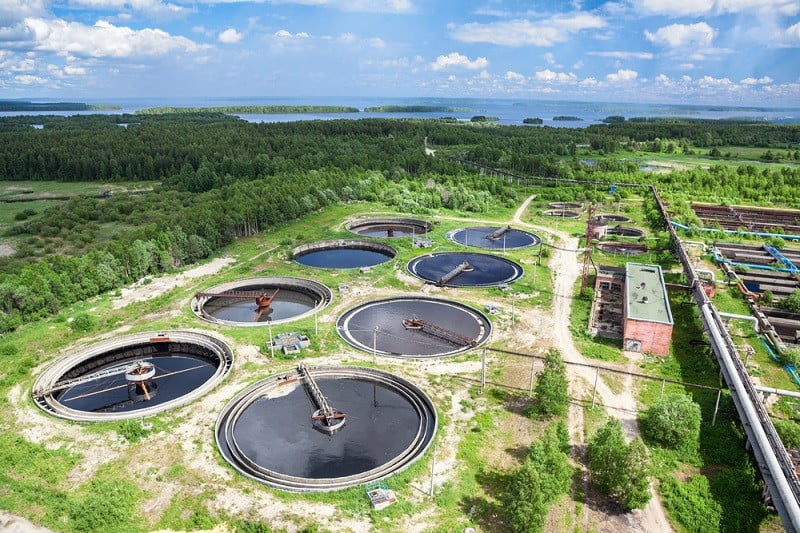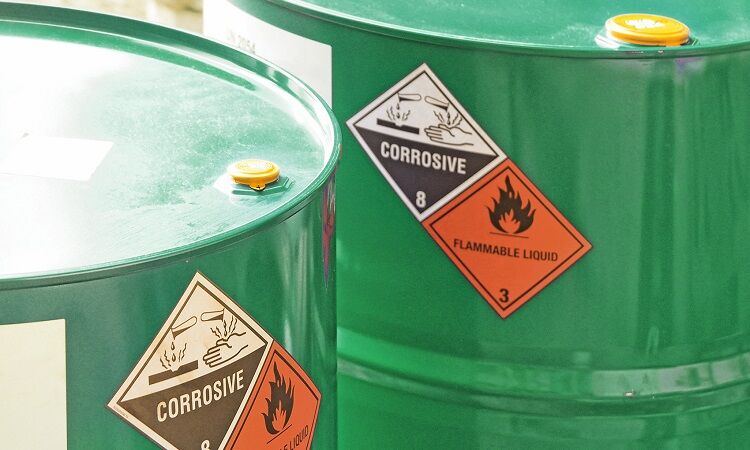Industrial Wastewater Treatment: Personalized Solutions for Complicated Wastewater Challenges
Industrial Wastewater Treatment: Personalized Solutions for Complicated Wastewater Challenges
Blog Article
Just How Fluid Waste Disposal Works: A Comprehensive Overview of Strategies and Technologies Employed

Overview of Fluid Waste Kind
The intricacy of liquid waste kinds demands a comprehensive understanding of their attributes and effects for disposal. Liquid waste can broadly be categorized into several kinds, consisting of commercial, local, farming, and contaminated materials. Each group exhibits distinctive buildings, requiring details monitoring methods to minimize ecological and health and wellness risks.
Industrial fluid waste originates from manufacturing procedures and frequently includes a series of impurities, such as hefty metals, solvents, and natural substances. Municipal liquid waste, mostly consisting of wastewater from homes and business establishments, contains raw material, nutrients, and virus (industrial wastewater treatment). Agricultural fluid waste, consisting of runoff from ranches, might have plant foods, chemicals, and animal waste, posturing threats to water high quality and ecological communities
Unsafe liquid waste is identified by its toxicity, sensitivity, or potential to trigger injury. This category includes materials like acids, bases, and certain chemicals that demand rigid handling and disposal protocols. Recognizing these varied liquid waste kinds is critical for establishing effective disposal techniques and guaranteeing compliance with environmental laws. Appropriate classification and characterization are vital for implementing proper therapy methods and lessening the unfavorable influence on public health and wellness and the environment.
Physical Treatment Methods

Testing is the preliminary step, where bigger particles and particles are gotten rid of from the liquid waste making use of screens or grates. This procedure safeguards downstream equipment from damage and makes sure smoother procedure. Complying with screening, sedimentation uses gravitational pressure to different solids from liquids. In sedimentation tanks, much heavier bits resolve near the bottom, forming a sludge layer, while the clarified liquid can be additional dealt with.
Filtering is an additional crucial method that entails passing the fluid via porous products, such as sand or membranes, to record smaller fragments. This action boosts the top quality of the liquid, making it suitable for subsequent therapy procedures.

Chemical Treatment Techniques
Chemical treatment techniques are essential for properly taking care of liquid waste, specifically in addressing dissolved and colloidal impurities that physical methods may not sufficiently remove. These strategies utilize various chemical agents to counteract, precipitate, or transform dangerous materials right into less dangerous kinds.
One typical technique is coagulation and flocculation, where chemicals such as alum or ferric chloride are contributed to promote the aggregation of suspended fragments. This procedure enhances sedimentation, enabling less complicated removal of the resulting sludge. Additionally, oxidation processes, utilizing representatives like chlorine or ozone, are employed to break down intricate natural compounds and pathogens, making the waste more secure for discharge or further therapy.
Neutralization is one more important method, which changes the pH of acidic or alkaline waste streams to neutral degrees, protecting against potential harm to downstream systems and the atmosphere. Additionally, progressed oxidation processes (AOPs) make use of combinations of oxidants and ultraviolet light to break down relentless toxins, accomplishing a higher degree of therapy effectiveness.
Organic Treatment Procedures
Organic treatment procedures play an important duty in the monitoring of liquid waste by making use of microorganisms to decompose organic matter and reduce contaminant degrees. These processes can be broadly categorized right into anaerobic and cardio therapies, each utilizing certain microbial communities to achieve reliable waste destruction.
Cardio treatment includes making use of oxygen to assist in the breakdown of organic products by germs. This procedure is commonly carried out in turned on sludge systems, where aeration containers supply a conducive environment for microbial growth, resulting in the oxidation of organic contaminants. The resultant biomass can be divided from treated effluent with sedimentation.
In comparison, anaerobic therapy takes place in the lack of oxygen, depending on different bacteria to damage down organic matter. This technique is specifically beneficial for high-strength have a peek here waste, as it creates biogas, a renewable resource resource, while decreasing sludge manufacturing. Technologies such as anaerobic digesters are often utilized in municipal and industrial applications.
Both anaerobic and cardiovascular biological therapies not just lessen the ecological influence of liquid waste yet likewise help with source recovery, making them vital parts of lasting waste administration methods. Their efficiency, adaptability, and performance sustain their widespread application across numerous industries.
Emerging Technologies in Disposal
Cutting-edge techniques to fluid garbage disposal are swiftly developing, driven by developments in innovation and an enhancing focus on sustainability. Amongst these emerging technologies, membrane layer bioreactors (MBRs) have actually acquired traction for Discover More Here their ability to combine biological therapy with membrane filtering, leading to top quality effluent that can be reused in different applications. MBRs enable smaller impacts and extra efficient procedures contrasted to typical systems.
An additional encouraging advancement is the use of anaerobic digestion combined with nutrient healing technologies, which not just deals with liquid waste yet also creates biogas and recovers valuable nutrients like nitrogen and phosphorus. This dual benefit enhances resource effectiveness and lowers ecological impact.
In addition, progressed oxidation procedures (AOPs) are being embraced for the destruction of complicated natural toxins. These methods utilize powerful oxidants and stimulants to break down impurities at the molecular degree, providing a very reliable solution for challenging waste streams.
Furthermore, the integration of expert system and artificial intelligence in waste monitoring systems is optimizing operational performance and predictive upkeep, bring about reduced costs and improved environmental compliance. These technologies mirror a considerable change towards even more reliable and lasting liquid waste disposal methods.
Conclusion
To conclude, efficient liquid garbage disposal requires a comprehensive understanding of various strategies and modern technologies. The integration of physical, chemical, and organic therapy techniques makes sure the reliable management of diverse waste types. Furthermore, the appearance of innovative technologies boosts therapy efficacy and promotes sustainability in waste monitoring methods. By continually progressing these methods, it comes to be possible to address the expanding challenges related to liquid waste, eventually adding to ecological protection and source recuperation.
Liquid waste disposal is an important aspect of environmental administration, needing a comprehensive understanding of different methods and innovations tailored to different waste kinds. Liquid waste can broadly be categorized into a number of kinds, including commercial, community, farming, and dangerous waste. Agricultural liquid waste, including runoff from ranches, may include plant foods, pesticides, and animal waste, posing risks to water high quality great post to read and ecological communities.
Numerous physical therapy approaches play a vital function in taking care of liquid waste successfully - industrial wastewater treatment.In verdict, efficient fluid waste disposal requires a detailed understanding of different methods and modern technologies
Report this page